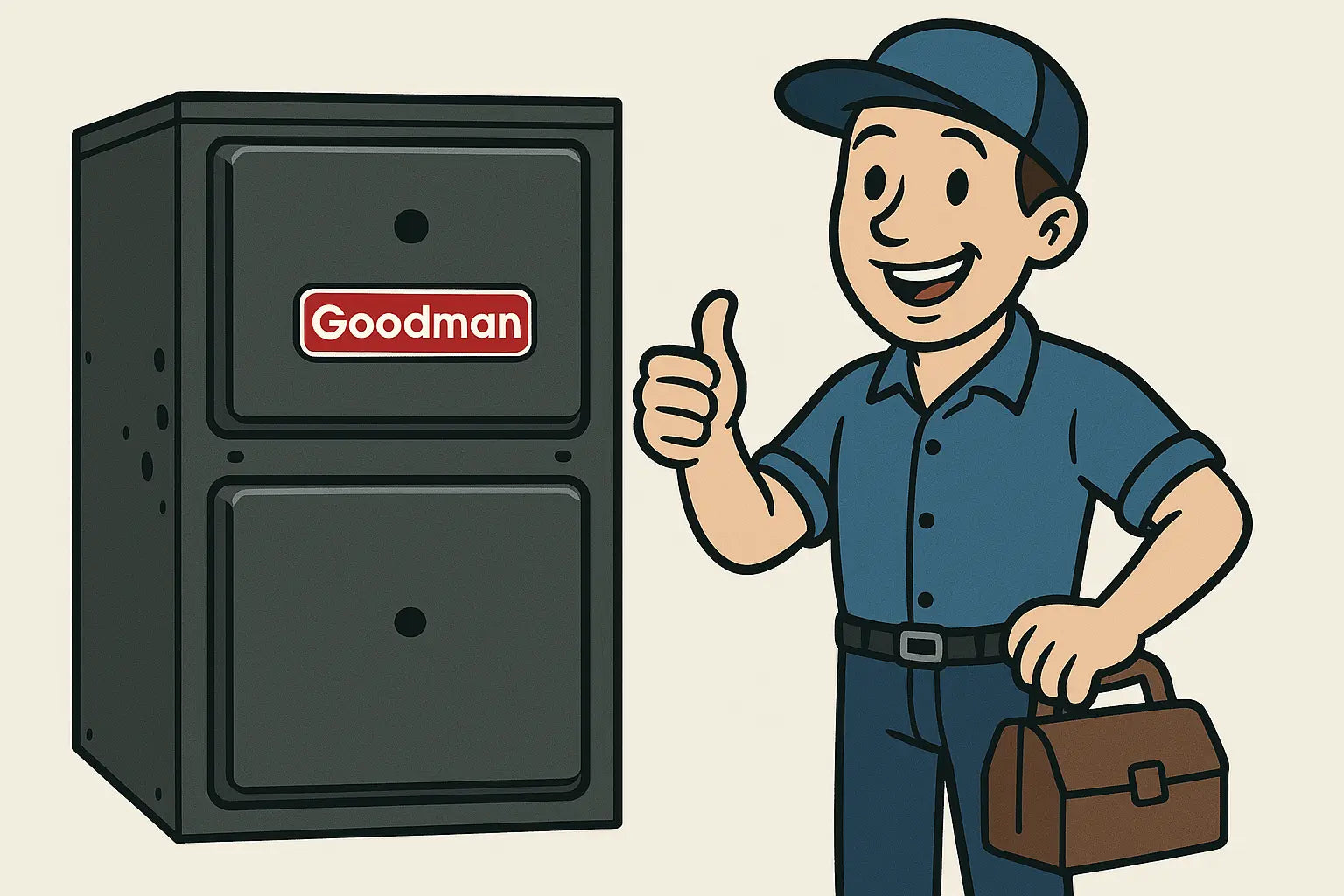Hey There! Jake Here!
When your Goodman GR9S920603BN furnace suddenly stops working on a freezing night, it’s natural to panic. But not every furnace issue requires an emergency service call—some problems are simple enough to troubleshoot on your own.
That said, there’s a fine line between safe DIY fixes and dangerous repairs that should only be handled by a professional. Messing with gas lines, heat exchangers, or electrical components without the right training can be risky.
Let’s go through the safe steps you can try before calling for help, and the dangerous repairs you should avoid to keep both your family and your furnace safe.
Quick & Safe Fixes You Can Try Yourself
Not every furnace hiccup means disaster. Some issues are minor and can be fixed in minutes without risking your safety.
1. Check Your Thermostat Settings
Sometimes the issue isn’t the furnace at all. Make sure your thermostat is set to “Heat” and the temperature is set higher than the current room temp. If you’re using a programmable or smart thermostat, confirm that the scheduling feature isn’t overriding your settings.
For guidance on choosing and using the right thermostat, check out this Energy.gov thermostat guide.
2. Replace or Clean the Air Filter
A clogged filter is one of the most common reasons furnaces stop blowing warm air. A dirty filter restricts airflow, making your furnace work harder and sometimes causing it to shut down.
Most manufacturers recommend checking your filter every 1–3 months. If it’s gray, dusty, or looks clogged, swap it out with a new one. Learn more about air filter maintenance from the American Lung Association.
3. Check the Power Supply
It might sound simple, but furnaces can lose power if a breaker trips. Head to your electrical panel and make sure the breaker labeled “furnace” hasn’t flipped.
If you’re unfamiliar with breaker panels, this HELP Plumbing guide to electrical panels can help you safely navigate the basics.
4. Inspect the Furnace Switch
Your Goodman GR9S920603BN should have a dedicated power switch (it looks a lot like a light switch) located near the unit. Make sure it hasn’t been turned off by accident.
5. Check the Vents and Registers
If your furnace is running but your rooms still feel cold, the issue might not be with the unit itself. Walk through your home and make sure vents aren’t blocked by furniture, rugs, or other obstructions.
The HVAC.com furnace troubleshooting guide offers more tips for spotting airflow problems before calling for service.
Repairs That Require a Professional
While DIY troubleshooting can solve simple issues, some furnace problems are not only complicated but also dangerous. Attempting to fix them without proper training can put your safety at risk.
1. Gas Leaks or Smell of Gas
If you ever smell natural gas near your furnace, evacuate your home immediately and call your gas provider. Do not attempt to fix this issue yourself.
For safety information, see the National Fire Protection Association’s gas safety guide.
2. Ignition or Pilot Light Problems
Your furnace relies on an ignition system to start. If the pilot light is out or the electronic ignition won’t spark, don’t try to repair it yourself. These systems involve delicate components and gas flow—both of which are dangerous to tamper with.
3. Strange Noises (Grinding, Banging, or Screeching)
Loud, unusual noises often signal mechanical problems, such as a broken blower motor or loose components. Continuing to run the furnace can cause further damage. A licensed technician should inspect and repair these issues.
4. Repeated System Shutdowns
If your furnace keeps cycling off, even after replacing the filter and checking the thermostat, there may be a deeper issue—like a failing flame sensor or overheating. These repairs require special tools and expertise.
When in Doubt, Call a Professional
Knowing the line between a safe DIY fix and a dangerous repair is the key to keeping your family warm and safe. While checking thermostats, filters, and breakers is fine for most homeowners, problems involving gas, ignition, or internal components should always be left to a certified technician.
For a reliable replacement option or professional-grade equipment, you can explore the Goodman GR9S920603BN furnace here.
Final Thoughts
Your Goodman GR9S920603BN is built for reliability, but like any furnace, it may run into issues—especially during peak heating season. By handling simple maintenance tasks yourself and knowing when to call a professional, you’ll extend the life of your furnace and avoid costly emergency breakdowns.
For a reliable replacement option or professional-grade equipment, you can explore the Goodman GR9S920603BN furnace here.
The next time your furnace acts up, run through these safe checks first—but never hesitate to reach out to an HVAC professional when the repair crosses into dangerous territory.
Need more installation and troubleshooting tips for your unit? Visit my guide right here!
Until next time,
- Jake, your comfort loving HVAC tech!







